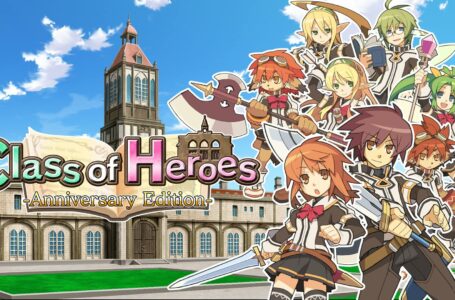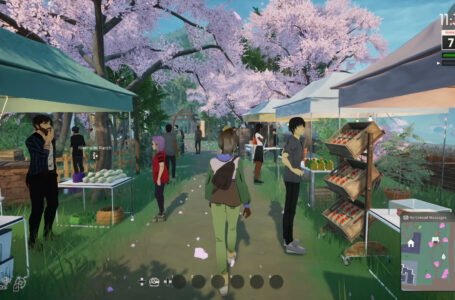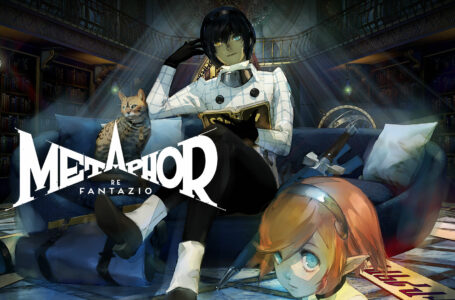Special interview with the ghostpia Season One developers (Part One)
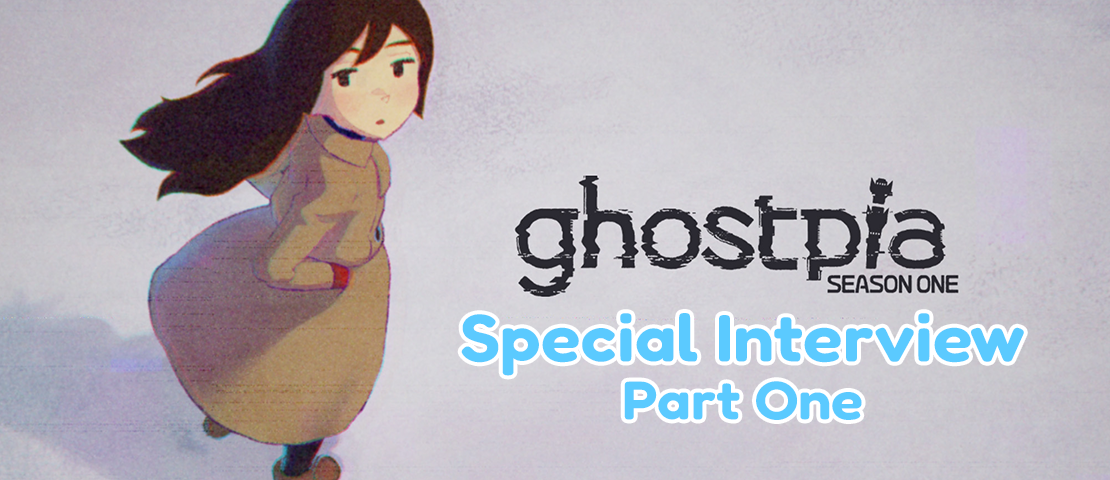
Special Interview (Part One)
Planning and Scenario: Hitsuhito Mita
Artwork: Suzume Yamamo
©Chosuido
Translation by H. Anthony Israel.
First appearance: Quarterly “S” No. 81 (S magazine vol. 81).
ghostpia Season One is an unique kinetic visual novel that tells the story of ghosts who live in a town sealed away in snow. This melancholic visual novel is now available to play on Nintendo Switch and coming soon to Steam.
The developers have kindly given us permission to translate an interview with the development team at Chosuido, which takes us through the backstory of how ghostpia Season One, and the team that made it, began.
The formation of Chosuido, ghostpia’s development team
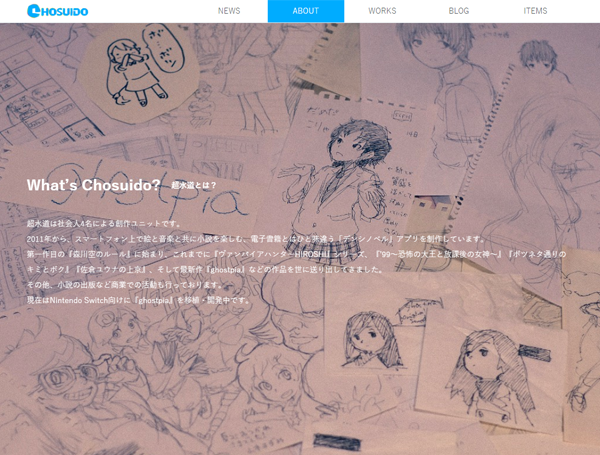
— Let’s center this interview around ghostpia’s world-building and visual aesthetics. First, would you like to briefly talk about the development team, Chosuido?
Yamamoto: We’re a four-member unit consisting of two scenario writers (Hitsuhito Mita and Ken Hachiya) and two graphic artists (buchi and Suzume Yamamoto). For music and other content that the four of us cannot provide on our own, we employ third-party creators. We primarily work on novel games.

— The team was formed in 2011, correct? I hear you were active as students.
Yamamoto: Mita and buchi are childhood friends who met in elementary school. I met the two of them in middle school. At the time, we’d spend our days off doing creative work at a family restaurant in the area. We ended up going to different high schools. But while I was attending a prep school for art university, Mita contacted me saying “Hey, it’s been a while. Wanna meet up?” I hadn’t realized that the two of them had formed an active doujin circle.
— Oh, they did?
Yamamoto: Yes, and they invited me to join them. They were like “It’ll be a nice breather from entrance exams, and you can quit whenever you want.” It was kind of sketchy (laughs). I was a little worn out from entrance exams, and it since it was such a casual, no-strings-attached invitation, they won me over pretty easily (laughs). Ken Hachiya, our fourth member, joined just as we were about to start on a new title as Chosuido. We were introduced by a Twitter follower when we were looking for a story writer.

— Mita, were you and buchi interested in game development when you first formed your doujin circle?
Mita: Chosuido has been making novel games since the onset, but I believe we truly began back in our student days. When the three of us were together in middle school, we started a drama club with a Japanese language teacher who wanted to start one. In drama club, we wrote the script for an original play and acted it out. I think that’s what inspired me to become a scenario writer.
— So you had storytelling experience before you started working on games, then.
Mita: We started Chosuido in our second year of high school, right before entrance exam season, so as a form of escapism, I said to buchi “The doujin world game is booming, so let’s make some games!” It was just me as a scenario writer and buchi as a graphic artist, so we chose the genre of novel games since they can be made with a small number of people.
— What drew you to the novel game genre of doujin games?
Mita: I think a big part of it was that even in high school, I was in drama club, setting stages. What I like about theater is that it’s a composite art with music, visuals, and dialog. I wondered if I could recreate that even in a different medium. That’s when I got the vague idea that doujin game scenario writing was quite similar to stage setting, so maybe I could do that.

— You felt there were similarities, I see. So did you invite Yamamoto to join you after you started making games?
Yamamoto: It wasn’t a game I was invited for. The Vocaloid boom was in full swing at the time, so I was asked if I could draw a CD jacket.
Mita: A Vocalo-P really did ask for an illustration, honest!
— So you’re not just grumbling, that’s something that actually happened, huh? (laughs)
Yamamoto: The request came with good timing, so I did do the illustration. Back in high school, I was in a band in the light music club, so I was a sucker for the words “CD jacket” (laughs). I was unaware about the existence of doujin music at the time, so I was surprised people made albums far more legit than small-time bands burning CDs by hand. I thought it was a good opportunity, so I took up on the offer to join Chosuido and illustrated the CD jacket and circle merch. It wasn’t until a good while later that the topic of game development came up. They said “We’re thinking of making a new novel game. Wanna join?”
Mita: Suzume’s been a good artist ever since middle school, but when I saw just how much power he had gained from art university prep school, I was deeply impressed. I was so confident that with him as a member, we could go anywhere! So I invited him to join us and help create the novel games I’ve always wanted to make.
ghostpia is a visual novel born from real experience
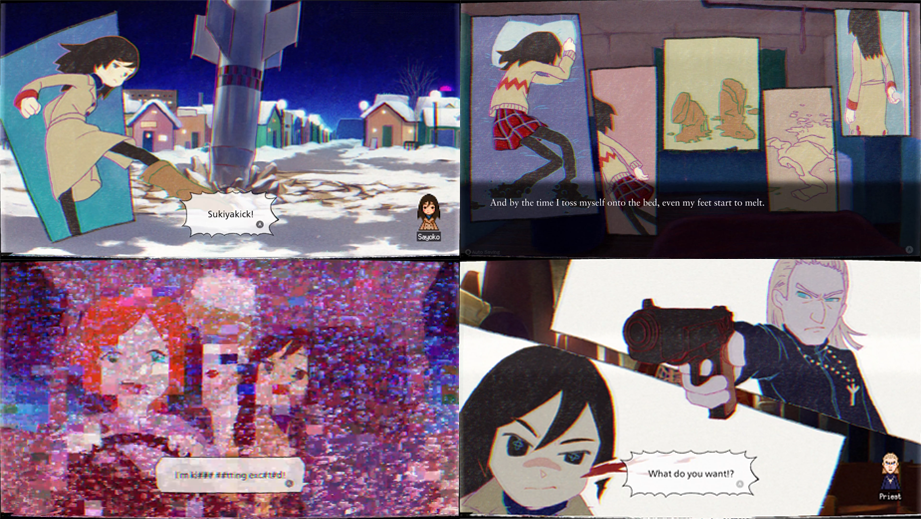
— Glad to know the story of how your group came to be! Sorry to ask this basic question, but could you tell us about the sort of visual novels Chosuido makes?
Yamamoto: While typical novel games have choices and branching paths to accommodate multiple endings, one characteristic of Chosuido is that we create detailed linear stories without choices. There’s no complex gameplay or branching, so you can enjoy a story depicted with art and music like a “readable movie” so to speak.
— A story you can slowly immerse yourself in does sound appealing. I’d like to ask more about ghostpia in particular now. First, please tell us more about the setting, a world of night where the ghosts live.
Mita: As the scenario writer, allow me to answer how we came up with the story. We got the inspiration for ghostpia’s setting during university. When Suzume and I were working on a certain project, there was a time we got so busy, we became completely nocturnal. We’d go to sleep at night and wake up at night too, when everything was closed except for things like convenience stores. Walking around the deserted streets, I thought to myself “We’re just like ghosts. We can’t escape the night.” I wanted us to develop that idea into a story.
— So it’s based off of personal experience, huh? What did you think when you heard the idea, Yamamoto?
Yamamoto: I thought it was interesting. I had thought that ghosts were such an unrealistic idea, but at the time, I was in a similar living situation, so it felt oddly real. I realized that there could be people out there in the world who are “trapped in the night.” So by the time I heard the idea, I had a rough idea of what such a setting could be like. I gradually expanded on the image I had in my head, thinking “This sort of world would be beautiful.” I was hooked and really wanted us to make this story.
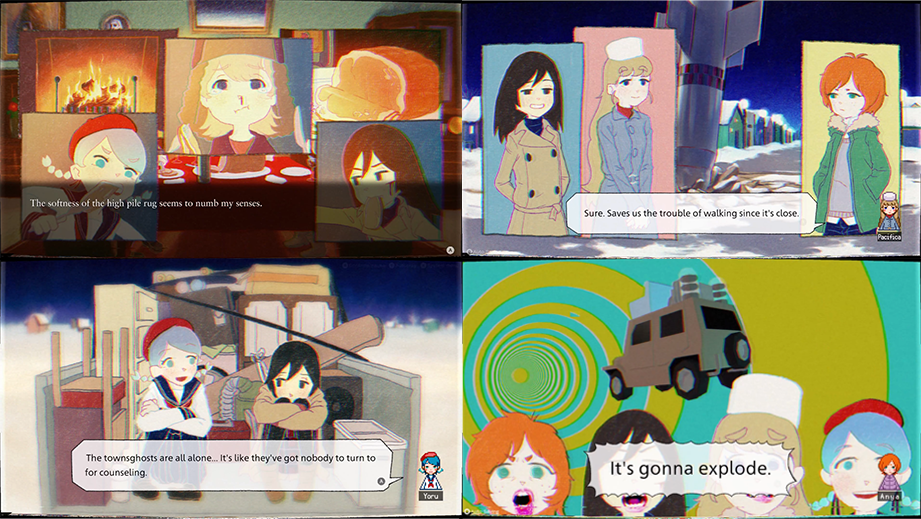
— Please tell us about the process of creating the picture book aesthetic.
Yamamoto: In consideration of the story’s flavor, we started talking about how we wanted to really change the presentation from Chosuido’s previous works. We used foreign cartoon animation as a reference for cute cartoony aesthetics, but it was a little out of my field of expertise. There were times when I couldn’t quite meet all of Mita’s requests.
Mita: I’m a fan of foreign cartoons, so I requested a similar look to that. Back in those days, I was watching Adventure Time and talked about how one really great aspect of the show and its aesthetics was how it could suddenly take dark turns or depict events on a grand scale. The reason I wanted our characters to have four fingers is because that’s a standard thing in foreign cartoons like that, you know?
Yamamoto: Of the shows I’ve watched, I drew inspiration from the cartoony factor of Panty & Stocking with Garterbelt. I took note of the way they would change proportions to widen the breadth of the show’s style and looked for other factors I could use in developing this new story’s style.
The aesthetics and outfits of ghostpia’s main characters

— The cartoony designs and soft picture book aesthetics feel very fresh to me. On that note, can you tell us about the protagonist Sayoko? I feel like her mysterious past and expressionless face give some breadth to the story.

Yamamoto: Of all the characters, Sayoko is the one who needed the most retakes. While ghostpia is told from Sayoko’s perspective, her memories of the past are ambiguous. Depicting her as too expressive would make it hard to see her lack of confidence, so it was a tough balancing act. I think the anxiety I had in designing Sayoko is reflected in her facial expressions as her own anxious personality.
hako life: I think the best part of Sayoko’s design is the contrast of her red skirt with her blue collar. I really like that characteristic coloring!
Yamamoto: Who let you in here? (laughs) It was Mita’s idea to have her wear a trench coat. Having her wear such a utilitarian outfit gave her design way too much brown in it, which made her seem a bit too plain for a protagonist, so I believe we made it a point to give her some more color.

— Speaking of colors, Yoru’s colorful design really stands out. Let’s talk about her.
Yamamoto: As she’s the first new ghost to arrive in the ghost town that has always had a population of exactly 1024, Yoru is a peculiar character who, in contrast with Sayoko, strains the sense of realism. Mita and I agreed that that’s the vibe she should give. As such, she’s the only one with gradient hair, and she inexplicably wears a summery sailor outfit in a snowy town. I hope the unpredictability of her design catches some eyes.
Mita: I requested Yoru to look “like a mermaid” so Suzume designed her with a sailor outfit. Suzume really does good work!
Yamamoto: I designed Yoru to be a mysterious beauty as a heroine for the protagonist to embrace. As for why I went with a sailor outfit… I can no longer remember at this point.
— Yoru’s clothes are blue and red, just like Sayoko’s, but her high color saturation gives off a different impression, doesn’t it?
Yamamoto: Color schemes are perhaps chosen to match the character’s personality. Yoru is bright and cheerful, and seems more like a protagonist than Sayoko does, so her color scheme should really match her, shouldn’t it?

— That’s true. Now, Pacifica seems like a completely different type of girl.
Yamamoto: She’s got the vibes of a reliable, kind older sister. I’m pretty sure the request was for a mature girl. Since the ghost town has no concept of time, it’s unclear just how much older she is compared to Sayoko, but Pacifica is quite thoughtful about the other girls. She’s like a reliable guardian. I aimed for a design that exudes an aura of reliability.
— She’s kind, but can spew vitriol when necessary, right? Her thick eyebrows are cute, too!
Yamamoto: I made a conscious to design the main cast so that when the four of them are standing in a row, they look like they’re each made of slightly different parts compared to each other. Thick eyebrows seemed like a good fit for Pacifica, so I gave them to her.

— Anya’s also got an eyebrow shape with a lot of personality to it, huh? Her hair and clothes convey her personality pretty well, too.
Yamamoto: I designed her to give tomboy vibes. She’s like the friend your age who’s a bad influence, and can be a little mischievous. I chose a boyish, unisex outfit for her.
— There are four main characters, but many other interesting characters show up in each chapter. When designing those other characters, did you consider how they’d balance with these four?
Yamamoto: Well, I would use the designs of these four as a base and slowly make derivations and changes to them. However, each character has different goals and personalities, so I made sure to prioritize making them each unique, while still maintaining the general aesthetics of ghostpia. I decide color schemes based on the character’s personality and theme, too.
Part Two coming soon – stay tuned!
ghostpia Season One – now available on the Nintendo eShop!
Staff
Planning and Scenario: Hitsuhito Mita
Development Coordination: Ken Hachiya
Artwork: Suzume Yamamoto, buchi
Main Programming: hako life (from Yokaze)
Music: Hiromu Takano
Vocals: Meno
Production: Chosuido
Publishing: room6
Where to find the ghostpia dev team
Twitter: @chosuido
Ghostpia Official Site: https://ghostpia.xyz/
Chosuido Official Site: https://chosuido.jp/
Suzume Yamamoto’s Twitter: @yamamotosuzume
Hitsuhito Mita’s Twitter: @hitsuhito
hako life’s Twitter: @clrfnd
Join The Discussion
Rice Digital Discord
Rice Digital Twitter
Rice Digital Facebook
Or write us a letter for the Rice Digital Friday Letters Page by clicking here!
Disclosure: Some links in this article may be affiliate links, which means we may earn a small commission if you make a purchase after clicking on them. This is at no additional cost to you and helps support Rice Digital!
- Anime to look out for this October - September 29, 2023
- Netflix original anime: the good, the bad and the ugly - September 28, 2023
- Post-apocalyptic visual novel Archetype Arcadia launches on October 24th, with pre-order discount available for PlayStation and Switch - September 26, 2023




